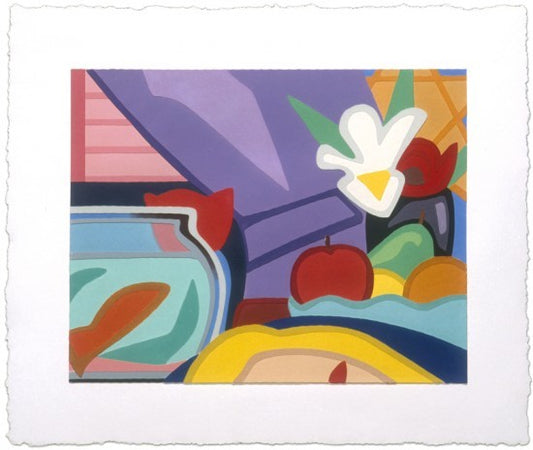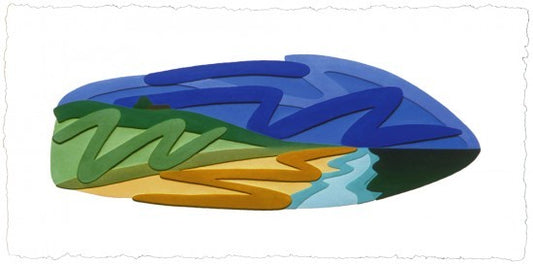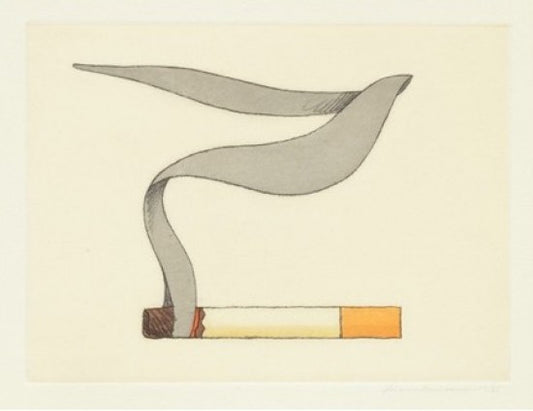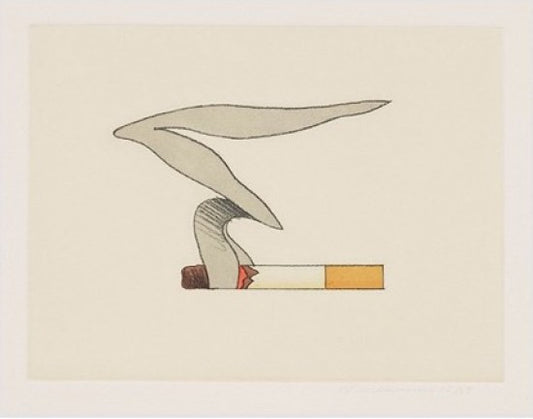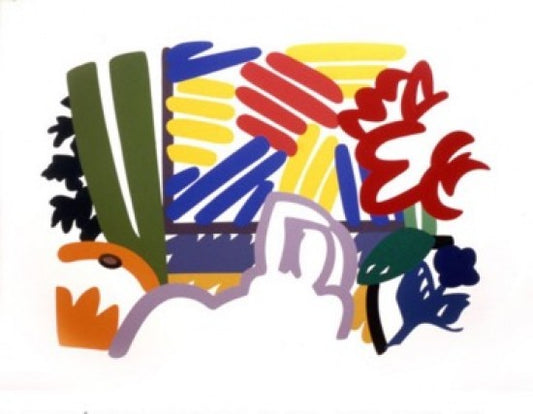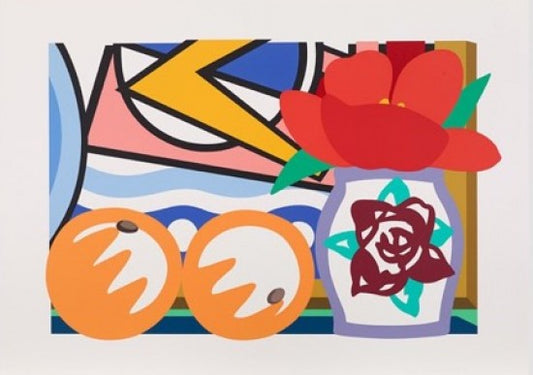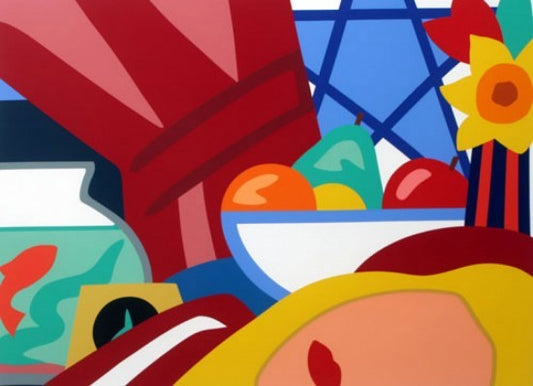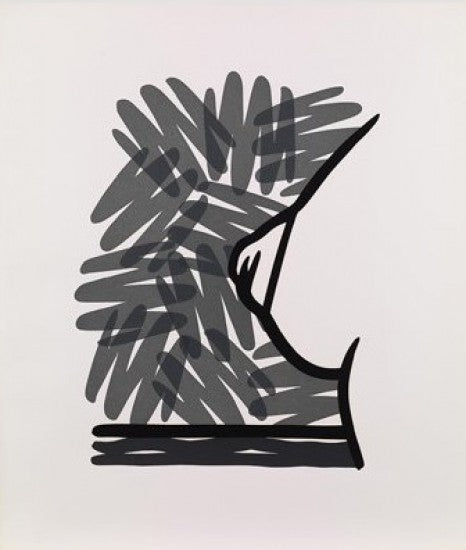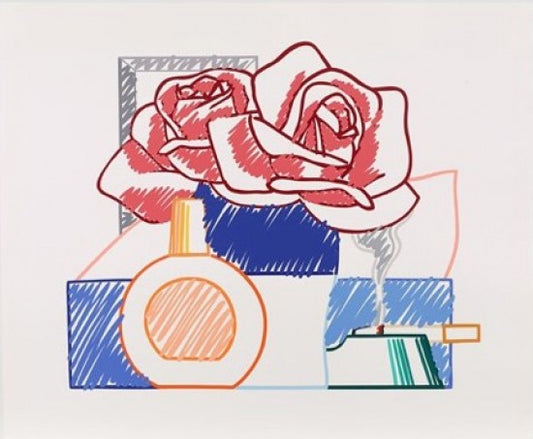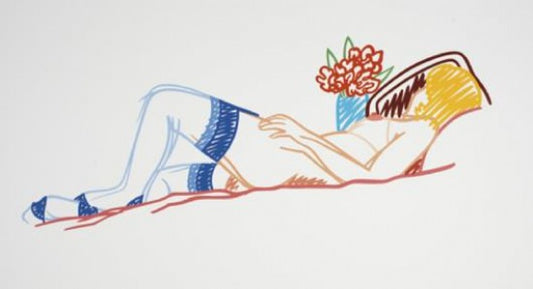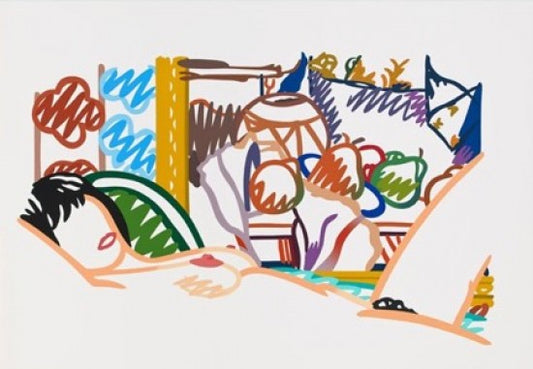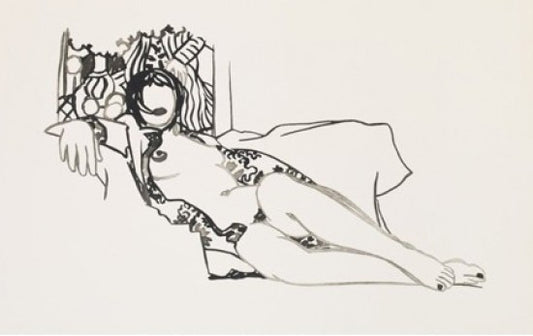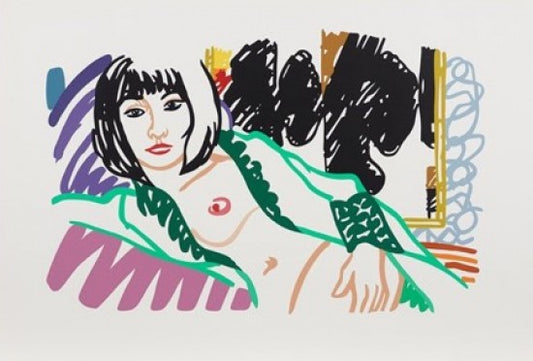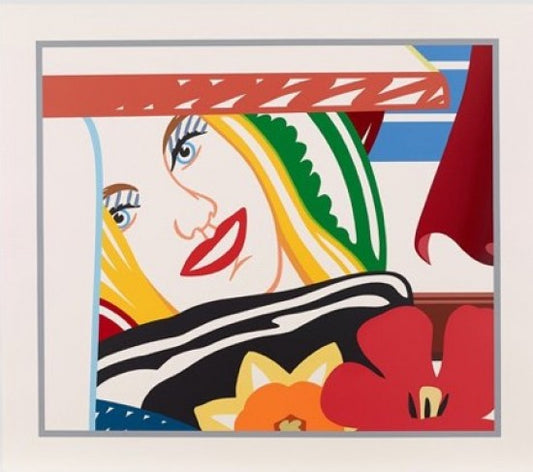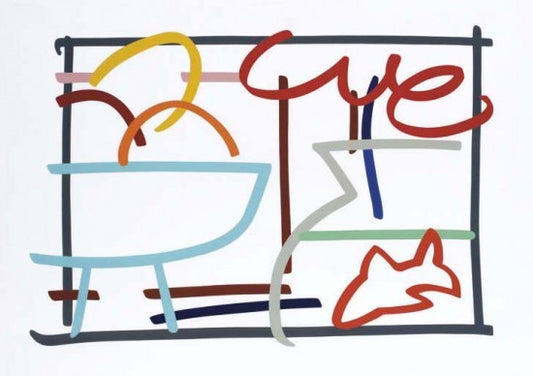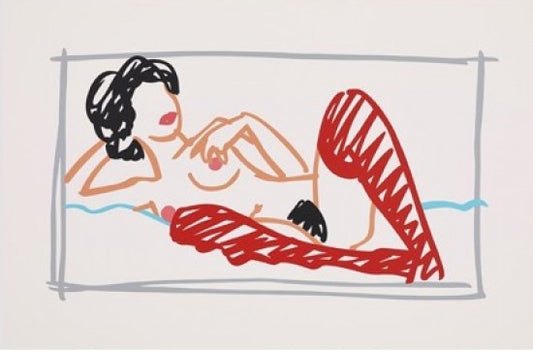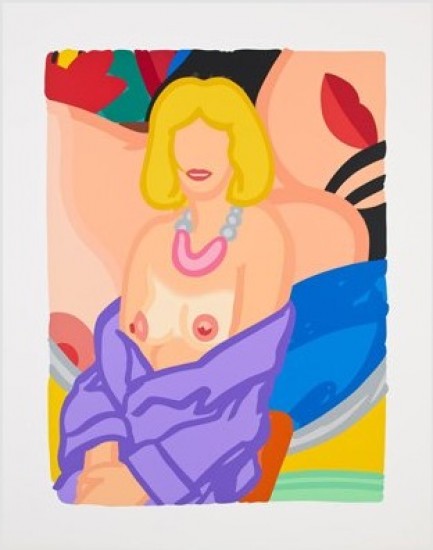Collection: Tom Wesselmann
(1931 - 2004)
Tom Wesselmann was born in Cincinnati / Ohio on 23 February 1931. Between 1945 and 1951 he studied at the Hiram College in Ohio before studying psychology at Cincinnati university. One year later he was called up for military service due to the Korea war. Being discontented with his situation he began to draw cartoons at that time.
In 1954 he resumed his studies and apart from this he attended the art academy. He moved to New York and attends Cooper Union School for Arts and Architecture in 1956. He earned his living by working as a cartoonist for several journals and magazines as well as by teaching at a high school in Brooklyn. At the end of the fifties a series of collages in small format were created being regarded as precursors of the later series “Great American Nudes” and “Still life” in big format.
Out of these collages he developed first nude depictions in 1960. His first single exhibition took place at the Tanager Gallery in New York in 1961. One year later he participated in the group exhibition “New Realists” at the Sidney Janis Gallery, his international career with numerous exhibitions started off.
The same year his first assemblages with the title “Still Life” came into existence. In 1963 Tom Wesselmann married his girl-friend and fellow student Claire Selley, who also was his most important model. He began a series of “Bathtub Collages”.
In 1966 the first of many one-man shows took place at the Janis Gallery. In 1964 Tom Wesselmann began with further series, e.g. “Bedroom Paintings”, “Seascapes” and “Smokers”, which he continued until the early 1980s.
In 1980 he published a treatise about his artistic development under the pseudonym Slim Stealingworth. In 1983 first “Metal Works” were produced, which were based on the artist’s drawings and sketches and which are still in the centre of the artist’s interest. In 1994 a comprehensive retrospective took place at the Kunsthalle in Tübingen.
Tom Wesselmann died in New York on 17 December 2004. His choice of trivial motifs, their monumentalisation, reduction to stereotypes, sexual emblematic as well as the use of bright colors made Tom Wesselmann a co-founder of the American Pop-Art during the 1960s.
-
“Sunset Nude with Yellow Tulips, 2000”
Vendor:Tom WesselmannRegular price Price on RequestRegular priceUnit price / per -
“Still Life with Blonde and Goldfish, 2000”
Vendor:Tom WesselmannRegular price Price on RequestRegular priceUnit price / per -
“Seascape, 1998”
Vendor:Tom WesselmannRegular price Price on RequestRegular priceUnit price / per -
“Smoking Cigarette #2, 1991”
Vendor:Tom WesselmannRegular price Price on RequestRegular priceUnit price / per -
“Smoking Cigarette #1, 1991”
Vendor:Tom WesselmannRegular price Price on RequestRegular priceUnit price / per -
“Thames Scene with Power Station, 1990”
Vendor:Tom WesselmannRegular price Price on RequestRegular priceUnit price / per -
“Still Life with Matisse and Johns, 1993”
Vendor:Tom WesselmannRegular price Price on RequestRegular priceUnit price / per -
“Still Life with Lilies, Petunias and Fruit, 1988”
Vendor:Tom WesselmannRegular price Price on RequestRegular priceUnit price / per -
“Still Life with Lichtenstein and Two Oranges, 1993”
Vendor:Tom WesselmannRegular price Price on RequestRegular priceUnit price / per -
“Still Life with Bouquet, 1999”
Vendor:Tom WesselmannRegular price Price on RequestRegular priceUnit price / per -
“Seascape Tit with Scribble, 1991”
Vendor:Tom WesselmannRegular price Price on RequestRegular priceUnit price / per -
“Scribble Version of Still Life #58, 1992”
Vendor:Tom WesselmannRegular price Price on RequestRegular priceUnit price / per -
“Nude with Bouquet and Stockings, 1992”
Vendor:Tom WesselmannRegular price Price on RequestRegular priceUnit price / per -
“Monica Sitting with Mondrian, 1989”
Vendor:Tom WesselmannRegular price Price on RequestRegular priceUnit price / per -
“Monica Nude with Cezanne, 1994”
Vendor:Tom WesselmannRegular price Price on RequestRegular priceUnit price / per -
“Monica Nude with Matisse, 1990”
Vendor:Tom WesselmannRegular price Price on RequestRegular priceUnit price / per -
“Monica Nude and the Purple Robe, 1990”
Vendor:Tom WesselmannRegular price Price on RequestRegular priceUnit price / per -
“Monica in Robe with Motherwell, 1994”
Vendor:Tom WesselmannRegular price Price on RequestRegular priceUnit price / per -
“Judy with Blue Blanket, 1998”
Vendor:Tom WesselmannRegular price Price on RequestRegular priceUnit price / per -
“House and Barn in Distance, 1991”
Vendor:Tom WesselmannRegular price Price on RequestRegular priceUnit price / per -
“From Bedroom Painting, 1990”
Vendor:Tom WesselmannRegular price Price on RequestRegular priceUnit price / per -
“Fast Sketch Still Life with Fruit and Goldfish, 1989”
Vendor:Tom WesselmannRegular price Price on RequestRegular priceUnit price / per -
“Fast Sketch Red Stocking Nude, 1991”
Vendor:Tom WesselmannRegular price Price on RequestRegular priceUnit price / per -
“Claire Sitting Robe Half Off (Vivienne), 1993”
Vendor:Tom WesselmannRegular price Price on RequestRegular priceUnit price / per

